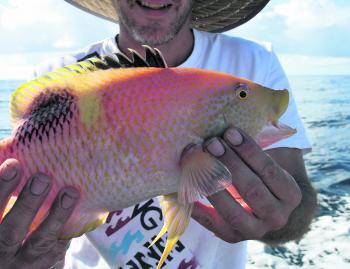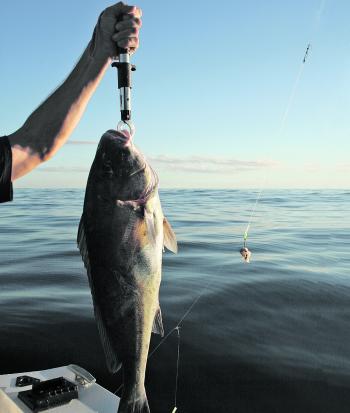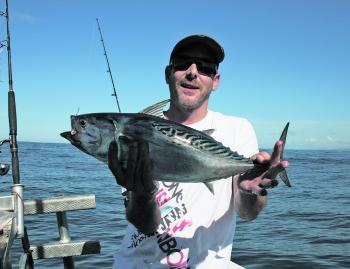As we head towards our summer species change, many anglers are dusting off the mackerel and tuna lures ready for a strongly anticipated summer run. Pelagics with attitude is what we enjoy on the Sunshine Coast mixed with the true speedsters of the ocean such as wahoo, marlin and sailfish. Our big hitting cobia and yellowtail kingfish have woken from a fairly slow winter period and are hitting baits and livies around the known areas.
With so many opportunities there is no reason for anglers not to go through the mandatory terminal tackle checks to ensure that the big one doesn’t get away. So take out the tackle box and check all your leaders for burs or scuff marks, sharpen or change all of your hooks, check all of your mackerel rigs and lures for wear and tear and you should be ready to get amongst them. This is all the stuff we anglers love to tinker with and it’s likely that most of us have already prepared our summer equipment.
The fishing was a little hit and miss last month, but the true reason for that was the huge number of poor weather days. The weather gods have not been kind but it’s right across the east coast so everyone is on an even par. When we could get out on the reefs we were able to get some quality pearl perch, snapper and emperor along with many other species.
There has been plenty of yakkas and slimy mackerel around over the past couple of months and it never takes long to get enough for a day’s fishing. Livies are the number one bait to fish with and if there’s a day where you can’t find them, try fish strips, pilchard or squid, which are all available at your local tackle store.
The inner reefs around Mooloolaba and Caloundra have been great to target around the tidal changes for everyday reef species. The northern areas around Coolum and Noosa are also producing, however there is an abundance of grinners around the wrecks. We all know that grinners can be a pest when targeting real fish species and that they can burr the leaders and force you to replace them nearly every drop.
The estuaries are still slow and have suffered from the reasonably warmer waters throughout the winter period. While the water remains hot, we don’t get the run of bait fish that normally bring on the bigger species.
There are still plenty of bream to catch, particularly around the canals and we should be seeing more flathead around soon within the Pumicestone Passage area and surrounding waterways.
Whiting are starting to work their way up into the shallow flats opposite Gemini Towers in Golden Beach and the deeper channel holds a few schools of chopper tailor, which are fun on light gear.
A few tarpon have hit hardbodied lures around the back end of the Pelican Waters canals and bream are always hiding in the cooler shadows around the Pontoons in the same area.
Blue swimmer crabs are being caught on lines up around Maroochydore along the Cod Hole stretch. They are always a nice surprise! The Maroochy River system has flathead, smaller mulloway, bream and plenty of whiting with the odd trevally giving anglers a memorable fight.
Mooloolaba rock walls at the bar entrance is the pick of the spots for bigger bream. It has some deeper and more importantly, cooler water, which attracts plenty of hungry species. Night time is by far the more productive time to target them and chicken or fish strips are the best bait. Of course, you will get them with peeled prawns and squid if nothing else is available.
There are so many different spots to fish around all the canals and systems across the Sunshine Coast it would take a lifetime to get around them, so there is no excuse for not catching a feed.
We should be into the tuna by next month and with a bit of luck the spotty mackerel and a few Spaniards will be taken as well.
Of course, with summer the deeper waters out around the Barwon Banks come in to play for larger species like pearl perch, mowong, sweetlip and snapper. The area also has plenty of reef and pinnacles but you will need to enjoy the travel time.
The top of the Hards further north can get you into some real challenging water with depths over 100m, which brings new challenges and will test your fitness. The rewards are well worth the travel time, let me tell you.
Traditionally November can be our transitional period between winter and summer species and it can be slow, but if you speak to those who know the local waters they should be able to point you in the right direction. Local knowledge is the best way to learn about any new areas you go to and anglers love to chat. Have Fun!
Reads: 1356
Coronation trout are a special catch out wide.

Tuskfish are a prime target this month and go particularly well on the table.

Mowong are another common by-catch around the reefs.

Mac tuna are fairly common out wide for most of the year.




